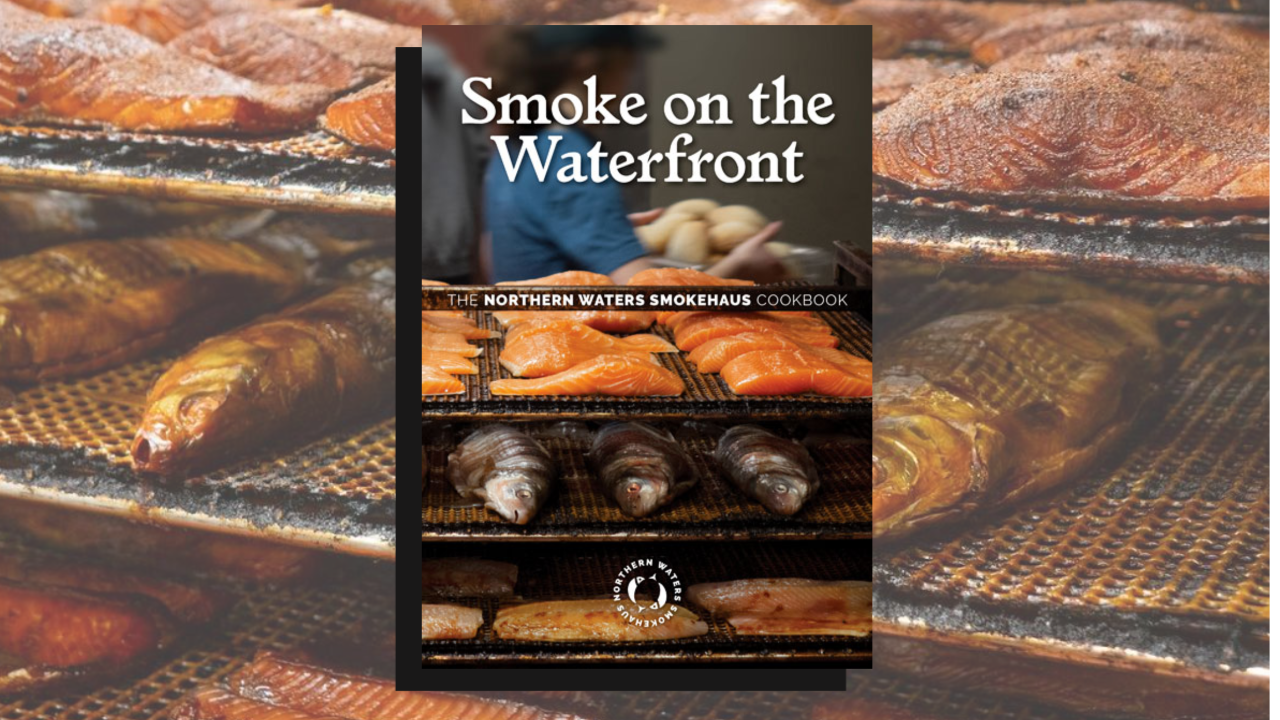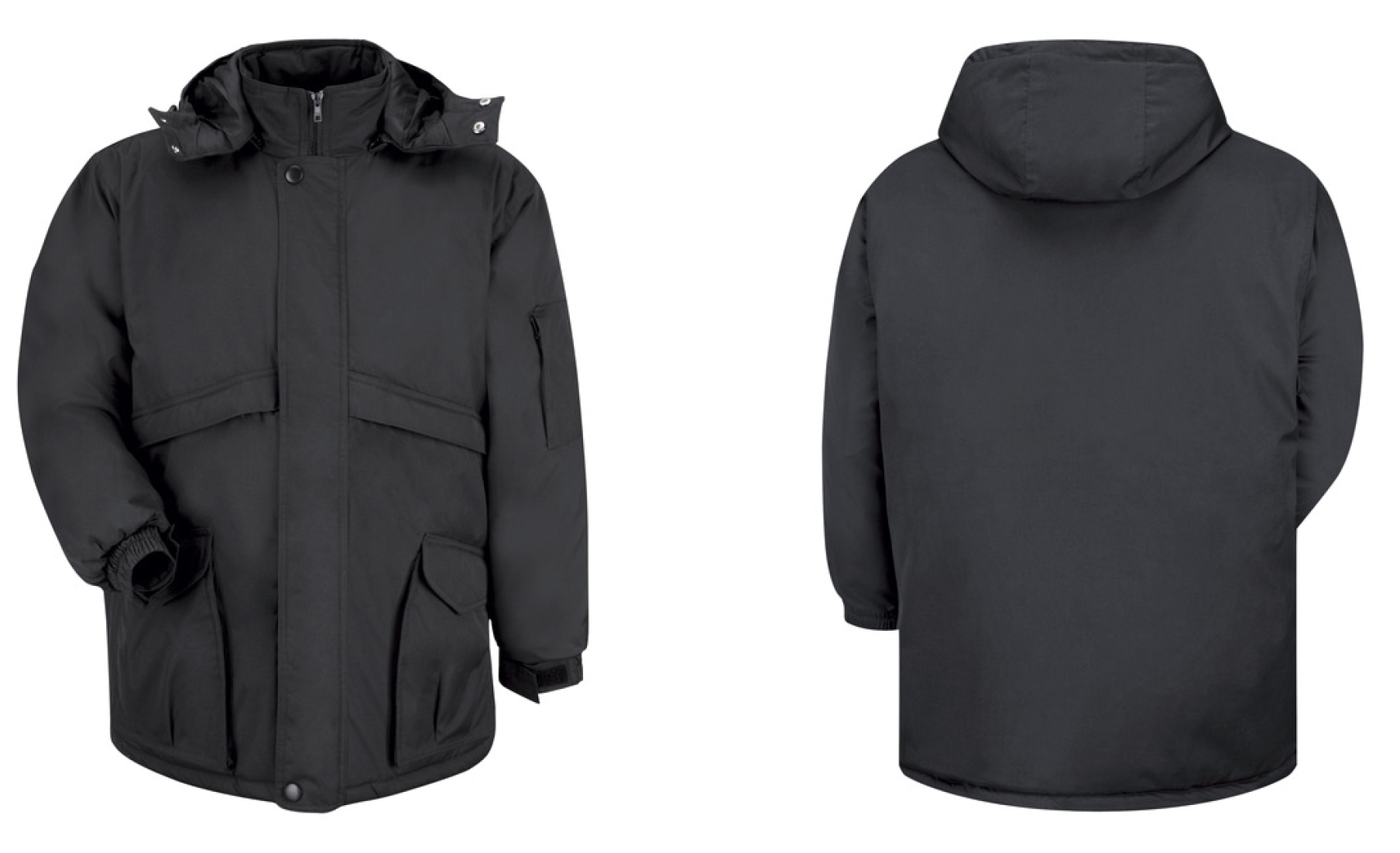I ate a Northern Waters Smokehaus salad for the first time in summer 2020, amid the high gloom of the COVID-19 pandemic, when my family took a day trip to Duluth for a brief break from stay-at-home life. We stood six feet from everyone else in line out back of the Dewitt-Seitz Building to pick up our takeout lunch. While we ate, we sat socially distanced from our best Duluth-dwelling friends and watched the lift bridge go up and down and the Canal Park seagulls swarm.
I remember the salad vividly: crunchy cabbage and Marcona almonds on a giant bed of greens. Two dressings! It came with one little compote of sesame oil vinaigrette and another of wasabi mayonnaise, which was topped with a dollop of sriracha. And the main feature: generous hunks of savory smoked salmon that flaked delicately underneath a toothsome top layer. Combined with the Lake Superior breeze and seeing my friends in person, the salad was a pandemic respite, the most restorative lunch of my life.
For years the Smokehaus folks have bestowed transformative culinary experiences upon their customers. And now, with the publication of Smoke on the Waterfront: The Northern Waters Smokehaus Cookbook (University of Minnesota Press, 208 pages, $34.95), anyone, whether they’ve been to Duluth or not, can lose their troubles in a NWS salad.
An ensemble of Smokehaus personalities contributed the recipes, essays, and photographs. Founder Eric Goerdt opens the book with the Smokehaus origin story: He learned to preserve game and fish while stationed with the Coast Guard in Sitka, Alaska. After opening Northern Waters Smokehaus in Duluth, his passion for preservation expanded beyond salting, curing, smoking, and canning to other methods like fermentation. The cookbook even contains a primer on sourdough starter because (did you know? I didn’t!) sourdough provides a natural defense against mold.
Cooks who share the Smokehaus ethos of taking the long way to their culinary destination will love this book. The comprehensive yet succinct instructions promise to guide the reader through proper and safe processes of preservation, like smoking meat on a kettle grill, smoking fish in an electric smoker, or stuffing meat batter into natural casings. For novices, the technical recipes include encouraging phrases and radical honesty like “this recipe is a pain in the ass, but it’s worth it.” The ideal reader won’t get freaked out by equipment listed in the sausage section (stuffing horn, pusher, sausage pricker?!), or the fact that the book’s list of recommended equipment includes three different types of thermometers (probe, ambient, infrared?!).
To be honest, I am not that ideal reader. While I love Michael Pollan-esque bromides about foraging for local food, in reality, I live really close to a Kowalski’s. I prefer not to think about how cuts of meat and fish come to their almost-final resting places in the upscale grocer’s refrigerated butcher counter display case. And so, I read the canning instructions for rinsing slime off of oily fish with great fascination, in the same way I’d read a longform story on polyamory or a recovery memoir about quitting methamphetamines. I’m not going to become a fish canner, or part of a throuple, or a meth addict, but I always enjoy the vicarious thrill I get from other people’s words describing life experiences I’ll never try firsthand.
I know my kitchen limitations well enough not to chase waterfalls. Even though I don’t attempt any hardcore food preservation, Smoke on the Waterfront contains plenty of rivers and lakes for me. The Smoked Whitefish spread, which I made with store bought fish, was delicious. And, for later this month, I’ve dogeared an entire Thanksgiving menu of sides to try: Andouille-Wild Rice Stuffing, Miso Gravy, Mashed Potatoes, and a Charcuterie Board. When I recreated the NWS salad at home, my Kowalski's-procured salmon didn’t have the distinctive Smokehaus pellicle—the shiny, hardened top layer—but the approximation still worked to bring me back, in spirit, to Canal Park.
Smoke on the Waterfront will also appeal to eaters who like to read about food more than they like to cook. Each section opens with a little meditation on what seasonal fare means in the Upper Midwest, and the recipes are interspersed with essays on topics like fish, sandwiches, grilling, and sodium nitrite. There’s even a shout out to the North Shorian shorts and sweatshirt sartorial ideal. The conversational, colloquial tone of the recipes is super entertaining. You don’t need to actually smoke your own chicken wings to enjoy descriptions like “Imagine a chicken wing and a lil’ smoky had a baby and that baby grew up to be a cool guy who went to art school in Brooklyn and got a job as a line cook—then he made you these wings.”
Smoke on the Waterfront is a treasure from the north, whether one uses it to affirm their from-scratch lifestyle, or to assemble store-bought ingredients into transformative salads, or to read for gustatory entertainment.
Whitefish Spread
Reprinted from Smoke on the Waterfront: The Northern Waters Smokehaus Cookbook by Northern Waters Smokehaus. Published by the University of Minnesota Press, 2023. Copyright 2023 by Northern Waters Smokehaus. All rights reserved. Used by permission.
The soft texture and mild buttery smokiness of Smoked Whitefish makes it an ideal candidate for a savory spread. In this recipe, the smooth and mild flavors of cream cheese and whitefish contrast with the bright astringence of horseradish, paprika, and capers. The acidity of lemon juice ties it all together.
- ½ pound cream cheese
- 1 tablespoon + 1 teaspoon horseradish
- 1½ teaspoons lemon juice
- 1 tablespoon heavy cream
- 1 teaspoon paprika
- ¼ cup capers, chopped
- ¾ pound Smoked Whitefish, picked
Allow the cream cheese to soften at room temperature while preparing the rest of the ingredients. Combine all ingredients, except the Smoked Whitefish, in a bowl or standing mixer, then gradually fold in the Smoked Whitefish. Mind the bones!







